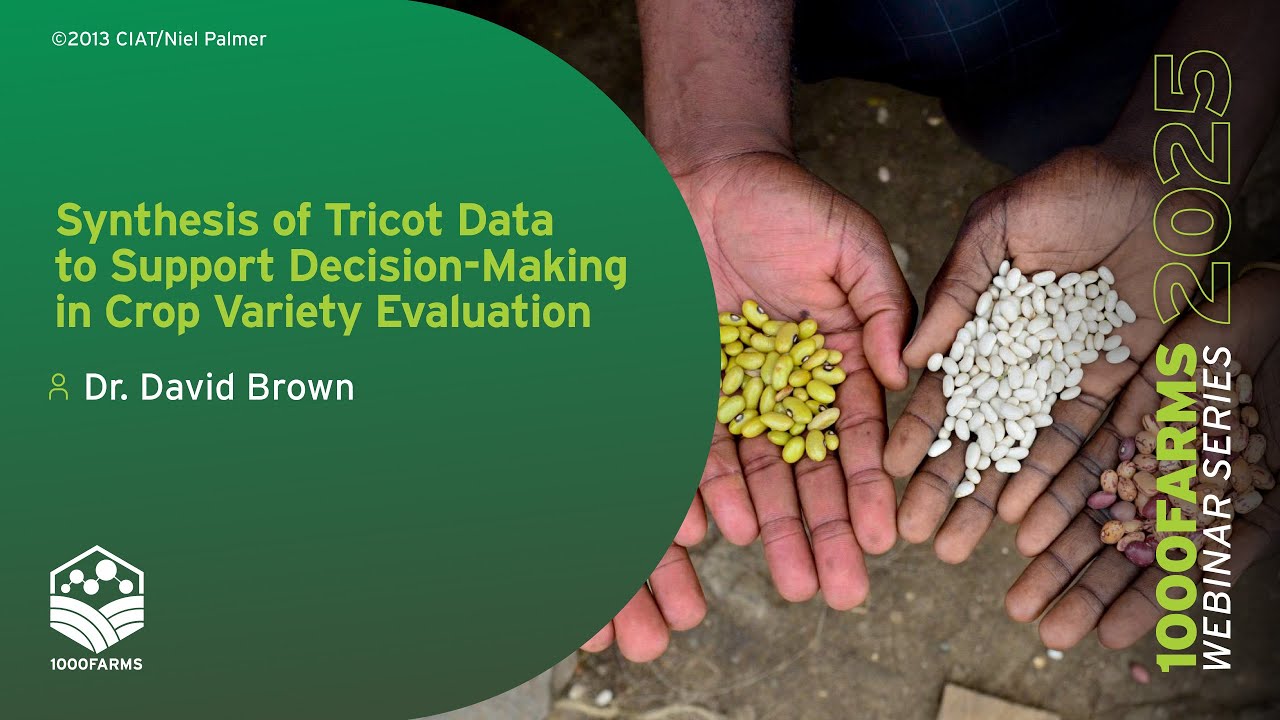Click on the link below to view the webinar by David Brown from Cornell University on 5 June 2025 on Synthesis of tricot data to produce location- and context-specific information to support decision-making in crop variety evaluation
Presenter Bio: David Brown is a Postdoctoral Associate in Geospatial Data Science at the EQUAL-LAB, led by Prof. Hale A. Tufan, Plant Breeding and Genetics Section, School of Integrative Plant Science, College of Agriculture and Life Sciences at Cornell University. His research interests are focused on the development and application of geospatial data science methods and tools to produce location- and context-specific information to support decision-making in agriculture.
For more info, contact David at: db877@cornell.edu
Summary : Data synthesis can maximize the value of data by integrating individual studies, increasing statistical power, and revealing new information to support decision-making in crop variety evaluation. This presentation provides two examples of how the rank-based data synthesis approach has been applied to tricot data to generate new insights in crop evaluation.
| Question | Answer |
|---|---|
| How feasible is it to incorporate future data, for example, on the common bean study in Central America, if you then came across some common bean data from Africa, would you be able to incorporate that? Would it be meaningful in any way? | The approach is feasible if there’s at least one linking variety evaluated in both regions, as shown in the cassava case. This allows the model to run, though with some constraints. However, the meaningfulness of the results is uncertain and depends on factors like the genetic relatedness of the varieties. More analysis would be needed to determine that. |
| How can tricot be expanded to industry based technologies? | I’m not usually involved in establishing or planning the trials themselves. However, Kaue mentioned they’ve done some cassava processing trials in Nigeria, so I assume it’s feasible and that they considered processing requirements. From a data science perspective, it’s important to tailor the analysis results to different end users — in this case, processors rather than farmers — which may require a different way of framing the results. As for the genetic relationship between varieties, it’s a complex question that depends on many factors. I’m not sure about the specifics, but it would be interesting to explore further. Kaue de Sousa: The presentation focused more on crop ecology, but from a consumer or market-oriented perspective, this kind of work is also possible. We have some relevant literature, especially related to cassava, so feel free to reach out if you’d like me to share the studies we’ve done in that area. |
Further reading:
- Brown, D., de Bruin, S., de Sousa, K., Aguilar, A., Barrios, M., Gómez, M., Hernandez, J. C., Chaves, N., Madriz, B., Machida, L., Mejía, P., Mercado, L., Pavón, M., Rosas, J. C., Steinke, J., Suchini, J. G., Zelaya, V., & van Etten, J. (2022). Rank-based data synthesis of common bean on-farm trials across four Central American countries. Crop Science.
https://doi.org/10.1002/csc2.20817 - Nanyonjo, A. R., Angudubo, S., Iragaba, P., Brown, D., Nuwamanya, E., Esuma, W., Ozimati, A., Wembabazi, E., Kanaabi, M., Muhumuza, N., Bayiyana, I., van Etten, J., de Sousa, K., Tufan, H., & Kawuki, R. S. (2024). On-farm evaluation of cassava clones using the triadic comparison of technology options approach. Crop Science, 64, 2679–2697.
https://doi.org/10.1002/csc2.21293
